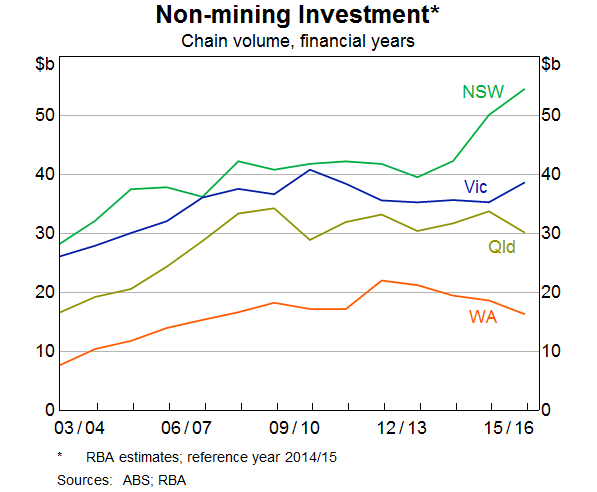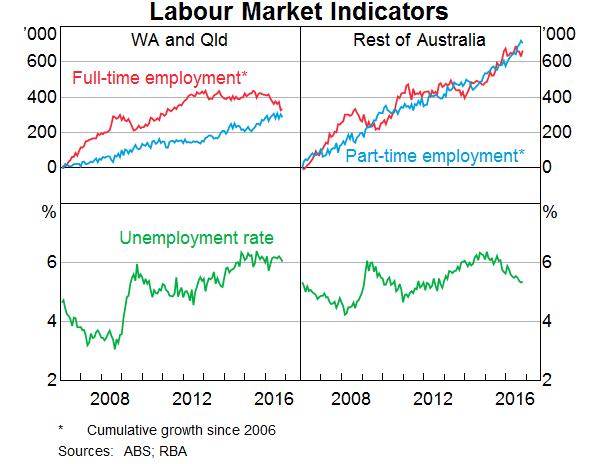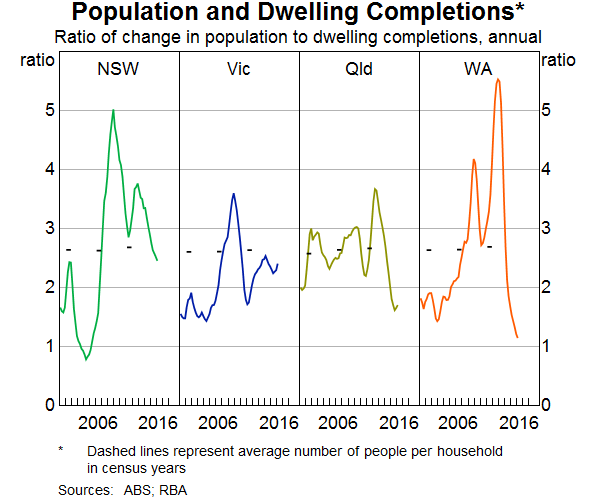The RBA’s Christopher Kent, Assistant Governor (Economic) highlighted the economic variations across states in Australia. He makes the point that in a country as large and diverse as Australia, the behaviour of the economy as a whole often misses important differences across the country.
A key reason for the differences across the states over recent years has been the effect of the large declines in mining investment and commodity prices. These have contributed to weaker economic conditions in the mining states and, therefore, weighed on economic conditions nationally. But those forces are waning; indeed, the terms of trade have even risen of late. Hence, there are reasonable prospects for stronger growth of nominal demand in the mining states and, by extension, for the economy overall. That would contribute to a rise in domestic inflationary pressures and a gradual return of inflation to more normal levels.
A close examination of the differences across the states can shed some light on the outlook for the Australian economy.
- The modest growth of non-mining business investment over recent years masks the stronger growth in some parts of the country and declines in others.

- The weakness in full-time employment nationally over the past few years owes much to the subdued demand for labour in the mining states.

- Housing market conditions are far from uniform. Prices are falling in Perth after a ramp up in supply combined with a fall in population growth. Meanwhile, Melbourne is seeing stronger population inflows, perhaps benefiting from strong growth of supply for some years and lower prices than in Sydney.
Housing price growth has picked up in Sydney and Melbourne, where auction clearance rates have increased to high levels. In addition, loan approvals to investors have increased over recent months.
In contrast to Sydney and Melbourne, housing market conditions remain subdued in Perth. Prices of apartments and detached dwellings there have declined further and are around 8 per cent below the peak. Rents in Perth have also declined by about the same amount. Those changes are consistent with the weakening in general economic conditions in Western Australia. Moreover, as the graph above shows, population growth in Western Australia has declined significantly since the peak of mining investment in 2012. And yet the full extent of the decline in population growth may not have been readily appreciated by buyers and builders of housing. That would be consistent with the fact that building approvals in Western Australia actually picked up noticeably from 2012 and did not peak until 2014, which was also about the same time that housing prices and rents reached a peak in Perth. This meant that the housing supply was still ramping up at the same time that population growth was declining. This is apparent in the following graph, which shows the growth in the number of people in each of the large states relative to the number of new dwellings completed at that time . The ‘dashes’ show the average number of people per household from the various censuses.

In Western Australia, this ratio has fallen sharply to about one additional person in the state per new dwelling completion. That’s well below the average number of inhabitants per dwelling. In other words, there are a lot of dwellings being completed relative to the needs of the slower growing populace. That is consistent with the sharp rise in vacancy rates in Perth and the adjustment to rents and housing prices. It also suggests that dwelling construction and construction employment are likely to remain subdued for some time. That is having a knock-on effect to other industries linked to the property market. These linkages are one way in which the decline in the resource sector has been extended and amplified through to other parts of the economy.
These are a few examples of how the experiences of the different states and industries can provide useful insights into the behaviour of the overall economy. The Bank puts time and resources into understanding these sorts of differences across regions and industries. We examine a range of publicly available data and build on that knowledge through our extensive liaison program. While the Bank sets monetary policy for the nation, an appreciation of the different parts gives us more confidence about our understanding of the behaviour of the whole.
